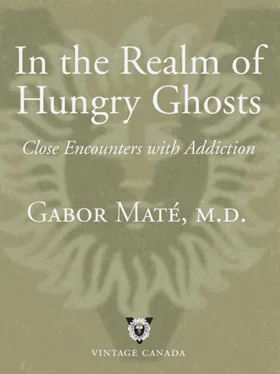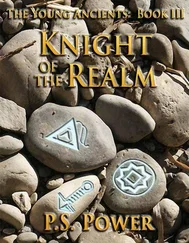How, then, to create the circumstances in which the possibility of freedom can take root and flourish? That’s the subject we turn to next.
CHAPTER 27

Imagining an Enlightened Social Policy on Drugs
I’ll start from the assumption that we want to redeem people trapped in drug addiction—and that redemption can be something other than an addict’s complete abstinence from addictive chemicals, a goal that’s not always realistic. Under current conditions it hardly ever is for most hardcore substance users, although I believe our success rate could be much higher if we abandoned our present intolerant and self-defeating social attitudes toward addiction and the care of addicted people. Even in cases where abstinence is not achieved, redemption would mean the reintegration of the user into the larger community and the restoration of his value as a person in his own eyes.
In the next pages, I’ll outline what I believe would be a rational and humane stance toward drug users, along with the policies that would flow from it. I do not expect such ideas to be embraced by society any time soon; an informed approach may be, for now, no more than a dream. In a culture that projects its darkest features onto the addict and makes addicted people into scapegoats for its shortcomings, insight and knowledge are almost entirely absent from public discourse concerning drug policies. Moralizing displaces compassion and prejudice substitutes for inquiry. The evidence accumulated by decades of scientific research into the psychology of addiction, brain development, child rearing and the social origins of addictive drives rarely enters into the discussion of how to tackle the persisting problem of drug addiction. Indeed, as this book goes to press, the Globe and Mail reports that Canada’s assault on drug addicts is about to escalate. According to the Globe, “the federal Conservative government [is preparing] to unveil a strategy that cracks down on illicit drug users,” with harsher penalties for users of illicit substances. The mountain of evidence showing the worthlessness of this get-tough approch is, once more, ignored. 1
The scarcity of scientific thought informing public debates on addiction is mirrored in the academic and medical arenas. In this era of sub-sub-specialization, each discipline appears to work in isolation from knowledge gathered by other researchers in closely related fields. We need far more integration of knowledge both in the professional realm and among laypeople.
Why does medical practice appear to be so opaque to the light of new findings? “I’ve thought about this a lot,” child psychiatrist and researcher Dr. Bruce Perry said when I interviewed him, “because I’ve been involved in several public education campaigns. What we found is that the groups that have the greatest vested interest in the old beliefs are the last to absorb new content. As such, medicine has been the most resistant professional group to absorb and integrate the emerging findings about brain development and the importance of early childhood.”
I don’t believe that the “vested interests” of medical professionals are, in this case, consciously selfish or motivated by material considerations; they are the investment we have in maintaining that our way of thinking is right, that the principles and methods we have practised are sound and that approaches outside our emotional or intellectual comfort zones are not worth investigating. Institutions such as professional bodies, medical schools and scientific associations tend to be deeply conservative, even if in some ways they are at the forefront of bold exploration. They mistrust new paradigms and resist moving outside the boundaries of a narrowly defined science-ideology that separates mind from body, human beings from their lifetime environments.
Similarly, most political leaders and policymakers seem unaware of the abundance of facts and experience refuting the theory and practices of the War on Drugs or they lack the will to act on the evidence. In the worst-case scenario some may be too blinded by a moralistic and judgment-ridden ideology to act according to the Christian principles they profess. Hence the need to imagine a humane reality that we could create if we chose to honour what science, insight and the precepts of our ethical and spiritual traditions teach us.
“The current set of public beliefs and institutional beliefs about substance abuse are impediments to the application of high-quality successful intervention,” says Dr. Perry. “The more we dehumanize and vilify substance abusers, the more it is impossible to put in place the kind of interventions that will help them.”
In other words, we need to get outside the box. The system we have doesn’t work—not for the addict and not for society. This system cannot be improved; it needs to be transformed.
I don’t claim that what I will propose is without potential pitfalls, or that I could possibly have got all the details right. But for this discussion the details are not the issue. The issue is the relationship society creates between itself and its drug-addicted citizens; the fundamental question is whether or not we recognize these people as human beings who are legitimately part of the social fabric, deserving compassion and respect. “Action has meaning only in relationship,” said the spiritual teacher Jiddu Krishnamurti, “and without understanding relationship, action on any level will only breed conflict. The understanding of relationship is infinitely more important than the search for any plan of action.” 2It’s not the particulars of a social policy that matter most, but the relationship between those who influence policy and those who are affected by it.
People may well disagree with what is suggested in this chapter, but we cannot afford to ignore Krishnamurti’s teaching on the precedence of relationship over action.
First, we need to take stock of ourselves and give up any hint of moral superiority and judgment toward the addict. Judging others clouds our eyes not only to their needs but to our own as well. Going back to the words of Jesus, “ first take the plank out of your own eye, and then you will see clearly to take the splinter out of your brother’s eye .” We cannot help people when we put ourselves in a position of judgment. Addicts, all but the very few completely sociopathic ones, are deeply self-critical and harsh with themselves. They are keenly sensitive to judgmental tones in others and respond with withdrawal or defensive denial.
Second, any rational approach to the problem of addiction has to be grounded in an appreciation of the interactive psychology and brain physiology of addiction. “An understanding of emotions should not be separated from neuroscience,” Dr. Jaak Panksepp told me. “If you don’t recognize that the brain creates psychological responses, then neuroscience becomes a highly impoverished discipline. And that’s where the battle is right now. Many neuroscientists believe that mental states are irrelevant for what the brain does. This is a Galileo-type battle and it will not be won very easily because you have generations and generations of scholars, even in psychology, who have swallowed hook, line and sinker the notion—the Skinnerian notion—that mentality is irrelevant in the control of behavior.” *26
Dr. Panksepp is not tilting at windmills. Narrow behaviourist thinking permeates political and social policy and medical practice, the childrearing advice dispensed by “parenting experts” and academic discourse. We keep trying to change people’s behaviours without a full understanding of how and why those behaviours arise. “Inner causes are not the proper domain of psychology,” writes Roy Wise, an expert on the psychology of addiction, and a prominent investigator in the National Institute on Drug Abuse in the U.S.A. 3This statement seems astonishing, coming from a psychologist. In reality, there can be no understanding of human beings, let alone of addicted human beings, without looking at “inner causes,” tricky as those causes can be to pin down at times. Behaviours, especially compulsive behaviours, are often the active representations of emotional states and of special kinds of brain functioning.
Читать дальше













